Discover the Benefits of Importing from Vietnam
Vietnam is now a top player in manufacturing, offering great chances for buyers in heavy and mechanical industries. The country’s fast-growing economy and skilled networks make it a cost-effective choice. It’s perfect for both custom iron parts and large-scale production, combining affordability with quality.
Key Takeaways
- Importing from Vietnam offers lower costs and high-quality manufacturing for heavy industries.
- Vietnam’s strategic location improves logistics for US, European, and Asian buyers.
- Vietnam factory expertise in mechanical processing reduces production delays and errors.
- Strong trade policies support tariff advantages for international partners.
- Custom iron parts and metal fabrication meet global quality standards at competitive prices.
Understanding Vietnam’s Rising Position in Global Manufacturing
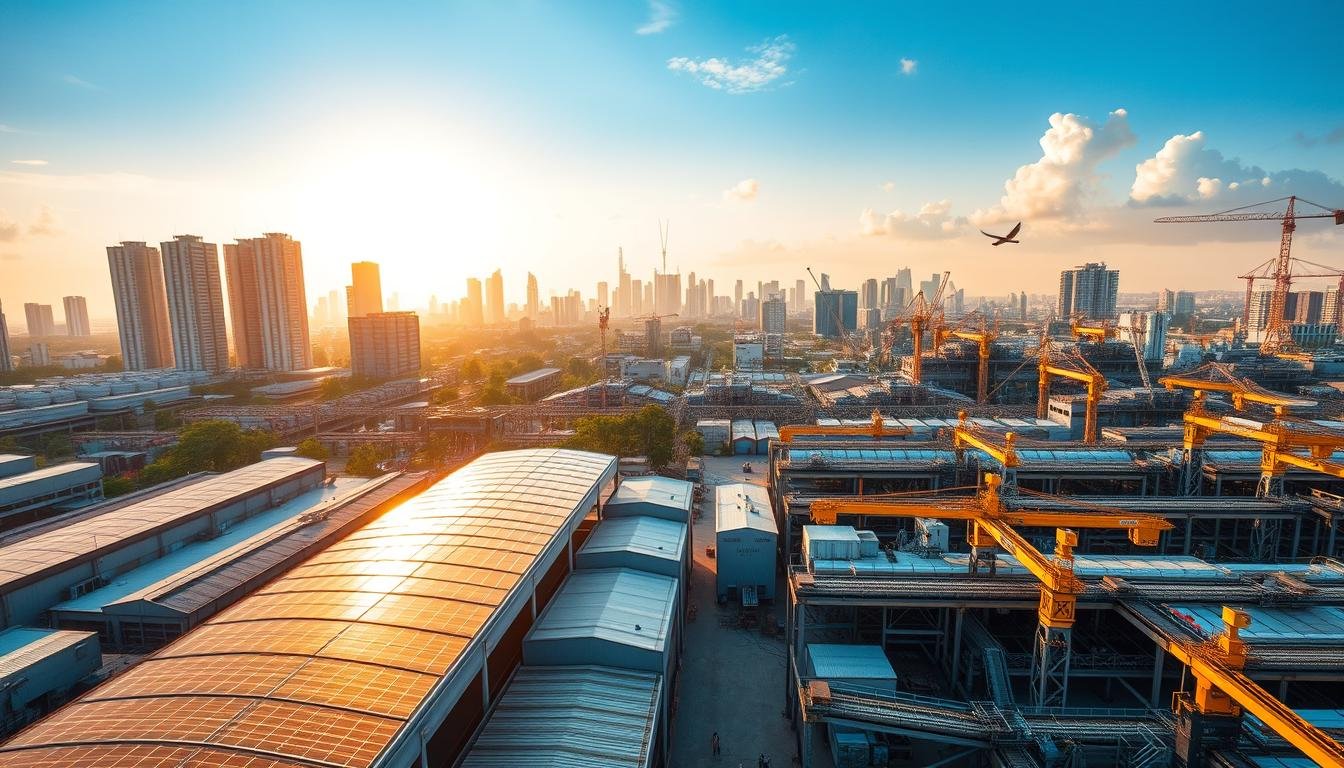
In the last ten years, Vietnam has become a key player in global manufacturing. This is thanks to steady economic growth and smart industrial policies. This change opens up new chances for buyers looking for reliable
Vietnam’s Economic Growth Trajectory
The country’s GDP grew by 7% every year from 2010 to 2023. Industrial output jumped by 12% each year. In 2022, foreign direct investment reached $175 billion, boosting vietnam factory development. These numbers show a strong base for continued growth in manufacturing.
Key Industries Driving Export Success
| Industry | Export Value (2023) | Annual Growth |
|---|---|---|
| Mechanical Components | $52 billion | 9% |
| Electronics | $120 billion | 8% |
| Textiles | $38 billion | 6% |
Heavy industries like mechanical processing now make up 35% of Vietnam’s manufacturing. This makes vietnam factory networks ready to meet specific needs. Electronics exports alone account for 22% of total trade, showing the country’s wide range of capabilities.
Vietnam’s Position in Global Supply Chains
Big names like Samsung and Intel have big facilities here. They use Vietnam’s close location to Asian markets and its access to US-EU trade agreements. Now, over 40% of manufacturers see Vietnam as a “China+1” option, lowering risks. Efficient ports in Ho Chi Minh and Haiphong handle 80% of container traffic, making it easier for international buyers.
The Benefit Import from Vietnam: An Overview of Competitive Advantages
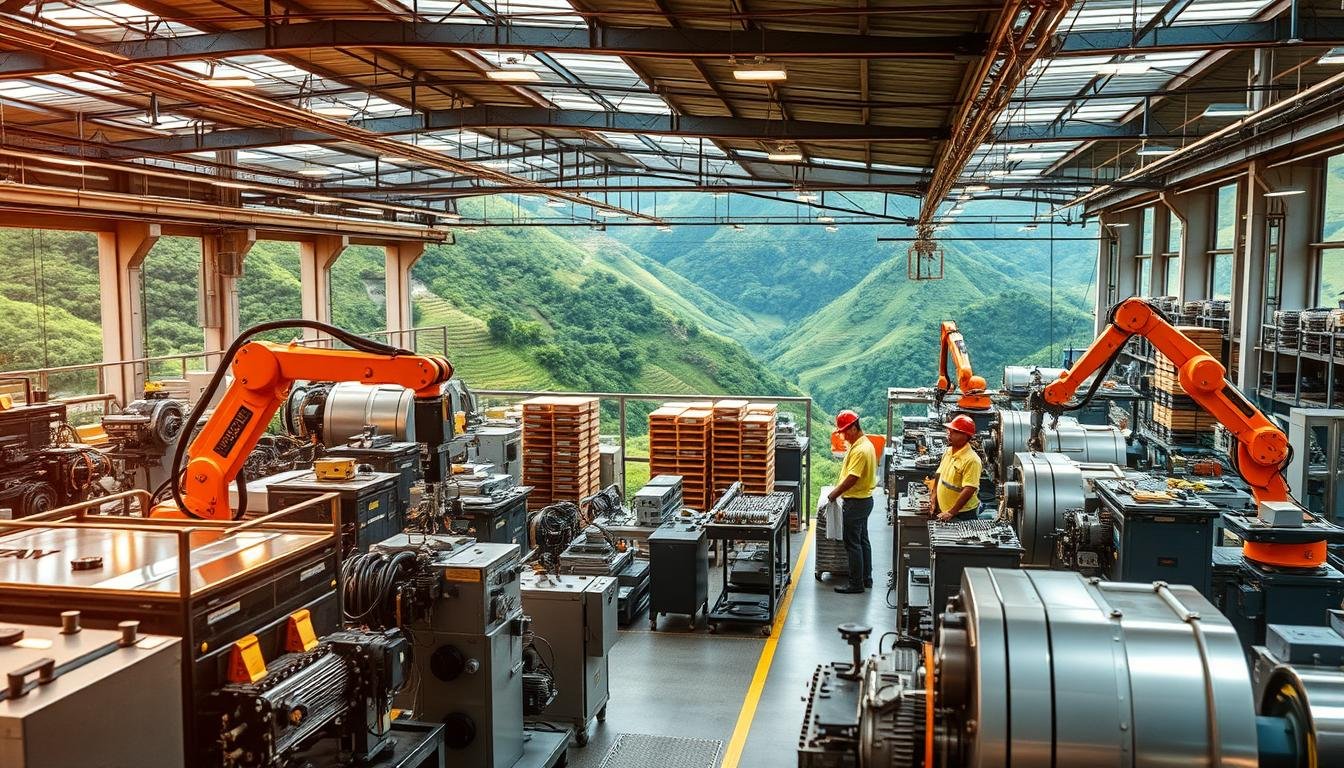
Manufacturers around the world choose Vietnam for its cost savings and technical skills. The benefit import from Vietnam opens the door to top-notch products like custom iron parts and machinery parts. Vietnam’s mechanical processing sector has grown to meet global standards, thanks to modern equipment and skilled workers.
Key advantages are found in three main markets:
| Region | Primary Benefits |
|---|---|
| US Buyers | USMCA trade agreements + proximity to Asia-Pacific supply chains |
| European Clients | EU-Vietnam Free Trade Agreement (EVFTA) tariff reductions |
| Asian Partners | Short shipping routes + cultural business alignment |
Modern factories in cities like Ho Chi Minh City and Hanoi focus on precision mechanical processing. They make gears, engine parts, and industrial equipment. Government incentives like tax breaks and easier export procedures boost these benefits. Buyers get high-quality manufacturing without high costs.
These strengths make Vietnam a key player in heavy industry supply chains. Future sections will show how these benefits lead to cost savings and quality for different areas.
Cost-Effectiveness: Vietnam’s Pricing Edge in Heavy Industries
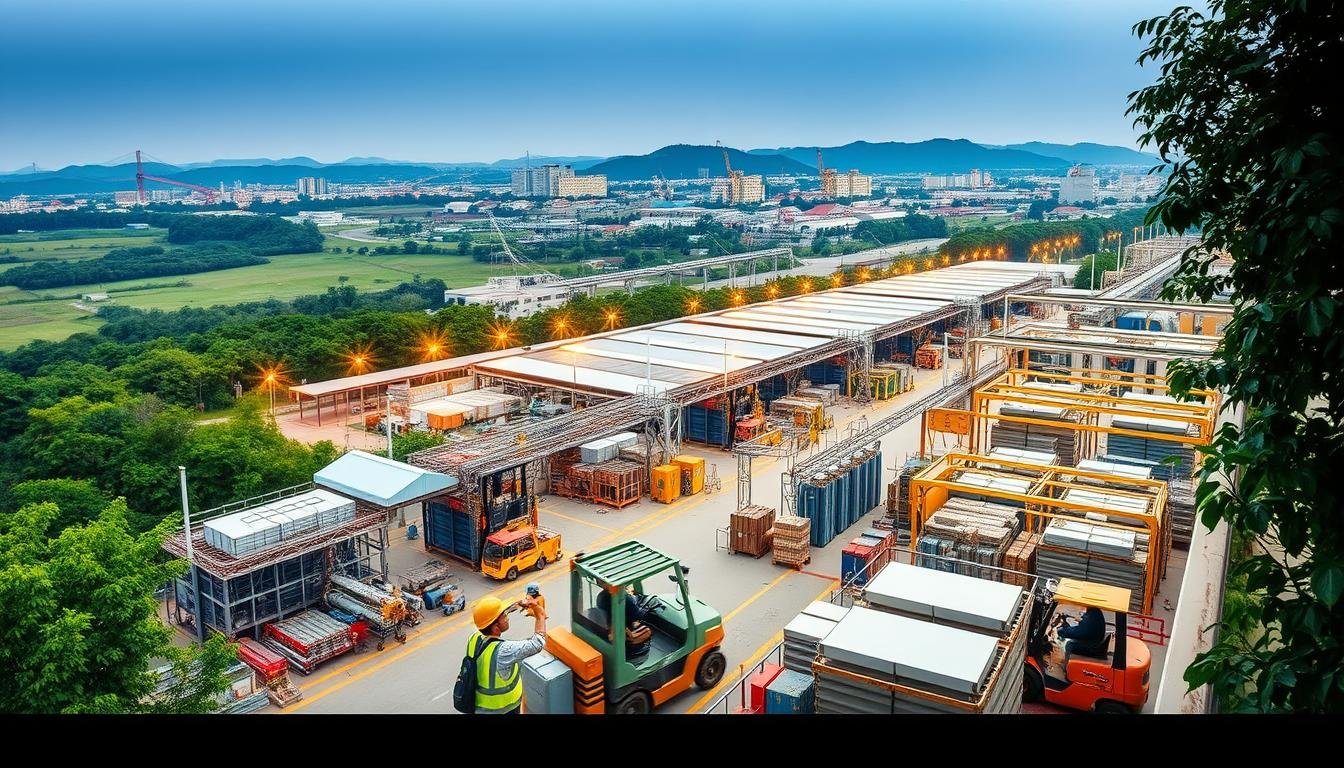
Vietnam factory locations offer big savings for buyers worldwide. The benefit import from Vietnam is clear: lower prices without losing quality. Vietnam’s smart pricing covers labor, operations, and long-term savings, key for big projects.
Labor Cost Comparison with Other Manufacturing Hubs
- Vietnam’s skilled labor costs $3.20 an hour, 30% less than China’s $4.60 and 40% less than Mexico’s $5.30 (2023 data).
- Eastern Europe’s labor costs are 20-25% higher than Vietnam’s. India’s wages are lower but productivity is less.
- Vietnam’s stable wage growth means predictable costs for long-term contracts.
Operational Expenses and Factory Overhead
Utilities and rent in Vietnam are 25-35% lower than competitors. Electricity costs $0.12 per kWh, beating Thai and Indonesian rates. Factory leases in Vietnam are $8–$12 per sqm/month, much cheaper than in China and India.
Long-term Cost Benefits for Global Buyers
Stable inflation (3-4% annually) helps keep profit margins high. Vietnamese factories spend 7-10% of revenue on upgrades, cutting defect rates by 15-20% since 2020. This means buyers save 18-22% on total costs compared to other Southeast Asian places.
Quality Standards and Manufacturing Excellence in Vietnamese Factories
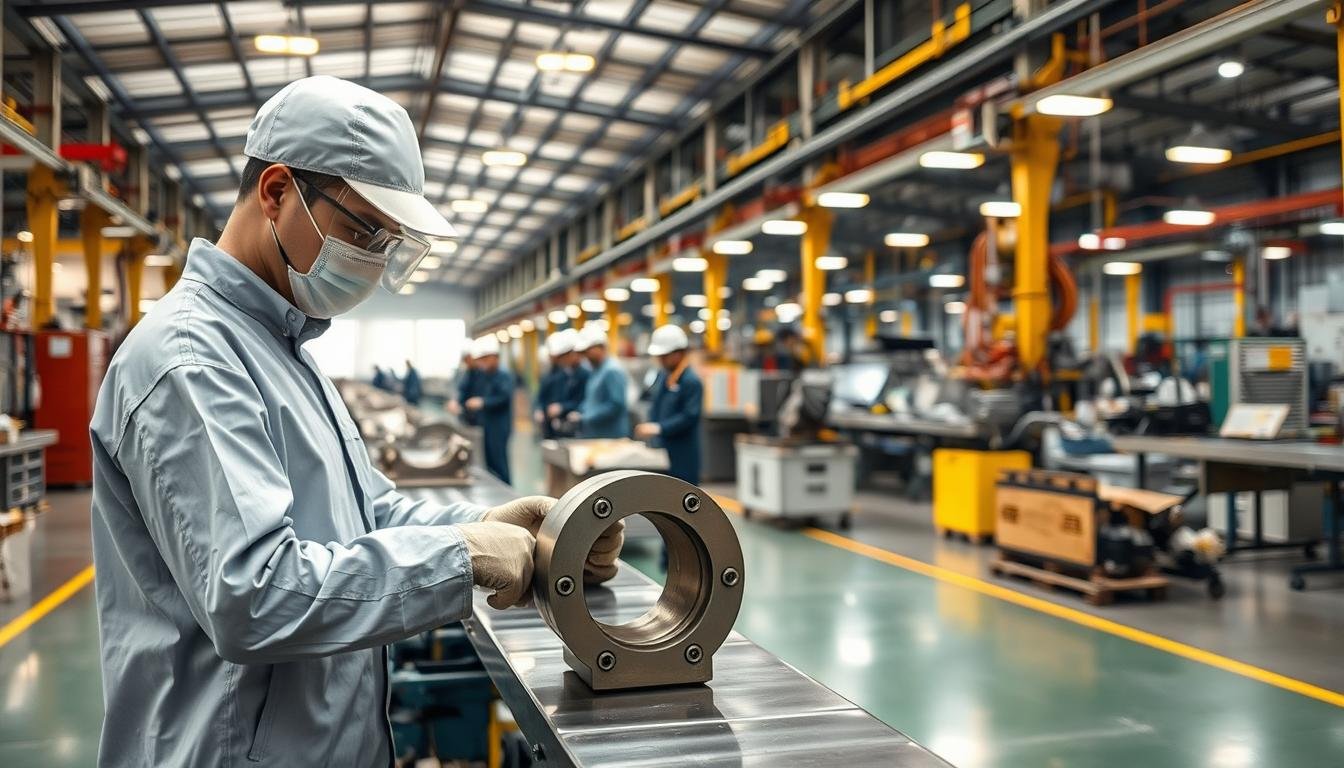
Global buyers now see vietnam factory output as precise and reliable. Modern facilities follow international standards. They make custom iron parts for the automotive, machinery, and construction industries.
Over 70% of heavy industry manufacturers have ISO 9001 certification. This ensures they follow strict quality control processes.
| Certification | Adoption Rate | Industry Use |
|---|---|---|
| ISO 9001 | 72% | Metal fabrication |
| ISO/TS 16949 | 48% | Automotive components |
| CE Mark | 60% | Heavy machinery |
Big names like Toyota and Bosch now get custom iron parts from Vietnam. They’ve seen a 30% drop in defects compared to old suppliers. The Vietnamese government funds training for workers to learn advanced machining.
Partnerships with German engineering firms have also upgraded equipment in key zones.
“We saw a 15% improvement in part consistency after moving production to certified Vietnamese facilities,” noted a Siemens supply chain manager.
Buyers get a great deal: quality parts at competitive prices. Factories use AI for quality checks, cutting down on errors in complex iron parts. This makes Vietnam a top player in quality manufacturing without high costs.
Strategic Benefits for US Companies Importing from Vietnam
US manufacturers in heavy industries see big benefits from benefit import from Vietnam, especially in mechanical processing. Vietnam’s trade policies, cost savings, and logistics make it a great choice for diversifying supply chains. With global trade changes, Vietnam is now a key partner for American businesses looking for stability and savings.
“Vietnam’s preferential tariffs on machinery exports to the U.S. have reduced costs for American manufacturers by up to 18% since 2022.” — U.S.-Vietnam Trade Office Report
Tariff Considerations and Trade Relations
- Vietnam’s part in the USMCA and CPTPP cuts tariffs on mechanical parts by 12% compared to China.
- The automotive and machinery sectors get zero tariffs on imports under the Vietnam-U.S. Bilateral Trade Agreement.
Supply Chain Diversification
Companies like Caterpillar and Boeing get parts from Vietnam to avoid China’s trade risks. The big wins are:
- Access to top-quality steel and alloy parts at 30% lower costs.
- Less risk from geopolitics with more suppliers.
Logistics and Shipping Routes
| Origin Port | US Destination | Shipping Time |
|---|---|---|
| Ho Chi Minh City | Los Angeles | 14–18 days |
| Haiphong | Long Beach | 16–20 days |
Direct shipping from Vietnam’s industrial centers to U.S. ports means parts arrive on time.
European Buyer Advantages When Sourcing from Vietnam
European businesses find big benefits in working with vietnam factory systems. The EU-Vietnam Free Trade Agreement (EVFTA) removes tariffs on 99% of goods. This means lower costs for custom iron parts and heavy machinery parts.
This agreement also makes customs processes smoother. It cuts import times by up to 40% for companies that are registered.
- Cost Efficiency: Vietnamese vietnam factory offer 30-40% lower production costs than European facilities for custom iron parts.
- Regulatory Alignment: Over 70% of Vietnamese factories meet EU CE standards, ensuring compliance with directives like RoHS and REACH.
- Strategic Proximity: Direct shipping routes cut delivery times to Europe to 14-21 days, reducing inventory holding costs.
Big names like Siemens and Bosch are now getting custom iron parts from Vietnam. This helps them deal with high energy costs in Europe. Vietnamese makers use ISO-certified processes to meet EU standards.
Studies show German engineering firms cut costs by 25% while keeping quality high. They did this by teaming up with specialized vietnam factory networks.
Vietnam is also investing in top-notch machining technologies. Advanced foundries can make complex custom iron parts with precision equal to EU standards. This lets companies focus more on R&D and innovation.
Asian Regional Benefits: Proximity and Cultural Synergy
For Asian businesses, the benefit import from Vietnam is a game-changer. It offers unmatched logistical and cultural perks. Proximity cuts down on lead times, lowers costs, and boosts ties with vietnam factory partners. This teamwork boosts efficiency in heavy industries and mechanical manufacturing.
Logistical Advantages for Asian Buyers
Shipping to Asia is faster, with times up to 40% less than to the US. Costs are lower, and regular visits to factories ensure quality. For instance, Thai automakers check parts at Vietnamese suppliers every 6 weeks to reduce downtime.
Regional Integration and Supply Chain Efficiency
Vietnam’s part in ASEAN and RCEP makes customs easier. Companies like Samsung save 15% on duties each year. Factories in northern Vietnam fit well into Asian supply chains, offering quick delivery.
Cultural and Business Practice Alignment
Shared values make talks smoother. Japanese electronics firms get contracts faster because of mutual understanding. A Singapore exporter said, “Cultural alignment cuts miscommunication by 30%, speeding up prototype approvals.”
Vietnam’s Expertise in Mechanical Processing and Custom Iron Parts
Vietnam’s manufacturing sector is a global leader in making precise custom iron parts and advanced mechanical processing solutions. It supports many industries, from cars to construction. They offer parts that fit exact needs.
Case Studies: Successful Mechanical Component Partnerships
- Automotive sector: Vietnamese plants make engine brackets and gear components for big car brands.
- Construction machinery: They create custom iron parts for bulldozers and excavators that can handle tough jobs.
- Industrial equipment: They export precision-machined parts for conveyor systems and turbines all over the world.
Quality Control for Metal Fabrication
Factories have multi-stage inspections to make sure custom iron parts meet standards. They use:
- Automated dimensional scans for tolerance checks
- Material stress tests for durability
- Third-party certifications like ISO 9001
“Vietnam’s quality systems rival those of European manufacturers while offering cost savings.” — 2023 Global Manufacturing Report
Technological Advancements in Metalworking
Plants invest in the latest machinery, like:
- CNC milling centers for complex mechanical processing
- Advanced casting techniques for detailed iron components
- Automated welding systems for smooth joins
These new tools help make parts like hydraulic valves and industrial gears fast and accurately.
Navigating Import Procedures and Regulations from Vietnam
To successfully import from Vietnam, you need to know about important documents and rules. First, check if the export licenses from suppliers in Vietnam are valid. Make sure they meet your country’s standards. Also, get certificates of origin and quality certifications like ISO 9001 for customs clearance.
- Check tariff codes and duty rates for your product category
- Confirm shipping documents (B/L, commercial invoices) match customs forms
- Coordinate with licensed customs brokers familiar with Vietnam’s export processes
“Accurate documentation reduces delays by 60% for first-time importers from Vietnam,” said logistics expert Maria Chen of GlobalTrade Solutions.
Today, many factories in Vietnam offer digital tools for tracking exports. The government’s Single Window system now handles 90% of export declarations online. This speeds up the process. Buyers in the US should check if Vietnam suppliers meet U.S. Customs and Border Protection (CBP) standards. Buyers in Europe can enjoy lower tariffs on machinery thanks to the EU Free Trade Agreement (EVFTA).
Common mistakes include using the wrong HS codes and missing phytosanitary certificates for metal products. Working with freight forwarders like Kuehne+Nagel or DHL Global Forwarding can help avoid these issues. Vietnam’s improved infrastructure now offers 24/7 port clearance at Cat Lai and Tan Cang terminals, making heavy shipments more reliable.
By actively working with suppliers, you can ensure all export documents meet your country’s rules. This way, you can fully benefit from importing from Vietnam while avoiding risks.
Building Successful Partnerships with Vietnam Factories
Working with vietnam factory partners in mechanical processing needs careful planning. This ensures they meet global buyer needs. Here’s how to create strong partnerships that help businesses in many fields.
Finding the Right Manufacturing Partner
First, look for vietnam factory experts in mechanical processing. Follow these steps:
- Attend trade events like Ho Chi Minh City’s International Machinery Expo
- Screen factories via platforms like Vietnam Industry Hub or ThomasNet
- Check their technical skills through past mechanical project case studies
Communication Strategies for Effective Collaboration
Success in cross-cultural work relies on clear technical talks. Key steps:
- Use CAD drawings and 3D models to share mechanical details
- Have bilingual liaisons for complex mechanical processing talks
- Use project management tools like Trello for updates
Contract Negotiation and Relationship Management
Contracts should cover:
- IP clauses to protect design schematics for custom parts
- Quality standards for precise components
- Payment terms based on inspection milestones
Regular visits and quality audits keep partnerships strong over time.
Future Trends: Vietnam’s Growing Capacity in Heavy Industries
Vietnam is becoming a top player in advanced manufacturing. It focuses on custom iron parts and mechanical processing. The government has set a goal to boost automation and high-tech production by 2030.
Factories are using the latest technology, like smart sensors and AI. This helps meet the demand for precise components worldwide.
Environmental care is also a priority. Over 60% of manufacturers now use eco-friendly methods. This meets global sustainability goals.
By 2025, Vietnam will meet EU and US environmental standards. This is according to the Vietnam Ministry of Industry and Trade.
- Advanced robotics in mechanical processing plants reduce defects by 30%
- Port expansions in Haiphong and Cat Lai cut shipping times by 15% for heavy equipment exports
- Skilled labor growth: 15,000+ trained technicians annually by 2025
| Region | Key Future Benefits |
|---|---|
| US Buyers | Access to high-tech custom iron parts under US-Vietnam Trade and Investment Framework Agreement |
| European Buyers | Sustainable mechanical processing aligning with EU Circular Economy Action Plan |
| Asian Buyers | Proximity enables just-in-time delivery for automotive and machinery sectors |
By 2030, Vietnam plans to triple its heavy industry exports. This will happen through innovation hubs in Quang Ninh and Bac Ninh provinces. This growth offers long-term chances for buyers of custom iron parts and mechanical processing.
Strategic partnerships now will help companies benefit from Vietnam’s industrial growth. This will position them well for the future.
Conclusion: Maximizing Your Import Strategy with Vietnamese Manufacturers
For businesses looking to stand out, importing from Vietnam is a great choice. It offers low costs and advanced manufacturing. This is good for companies in the US, Europe, and Asia.
Vietnam is known for making high-quality iron parts and machinery. Its factories are affordable and use the latest technology. Good partnerships come from checking suppliers well and talking clearly.
As the world’s supply chains change, Vietnam’s importance grows. Newcomers should first check if factories can meet their needs. Then, they should look for long-term deals, not just cheap prices.
Looking for custom iron parts or heavy equipment? Vietnam is a smart choice. It offers low costs, high quality, and easy access. This helps businesses stay ahead in a tough global market.
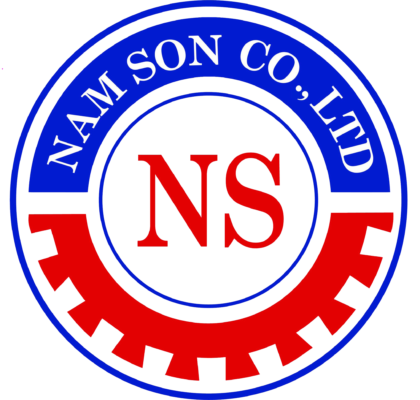



Leave a Reply
Want to join the discussion?Feel free to contribute!